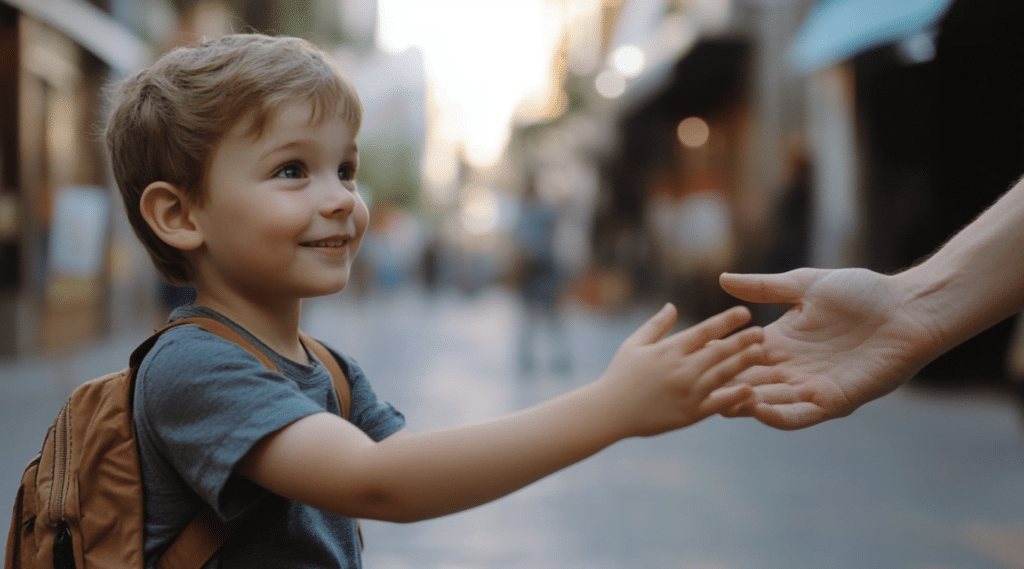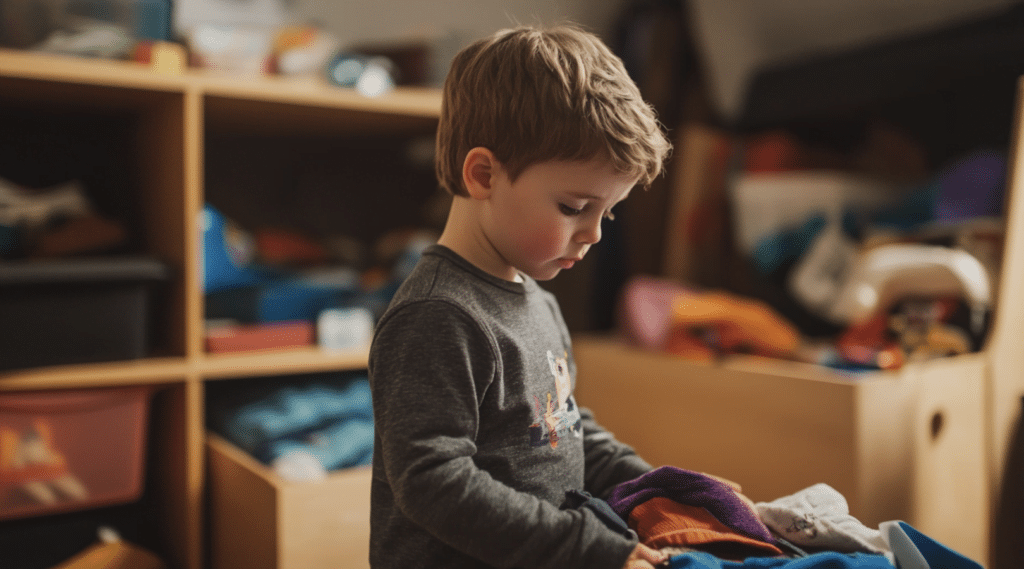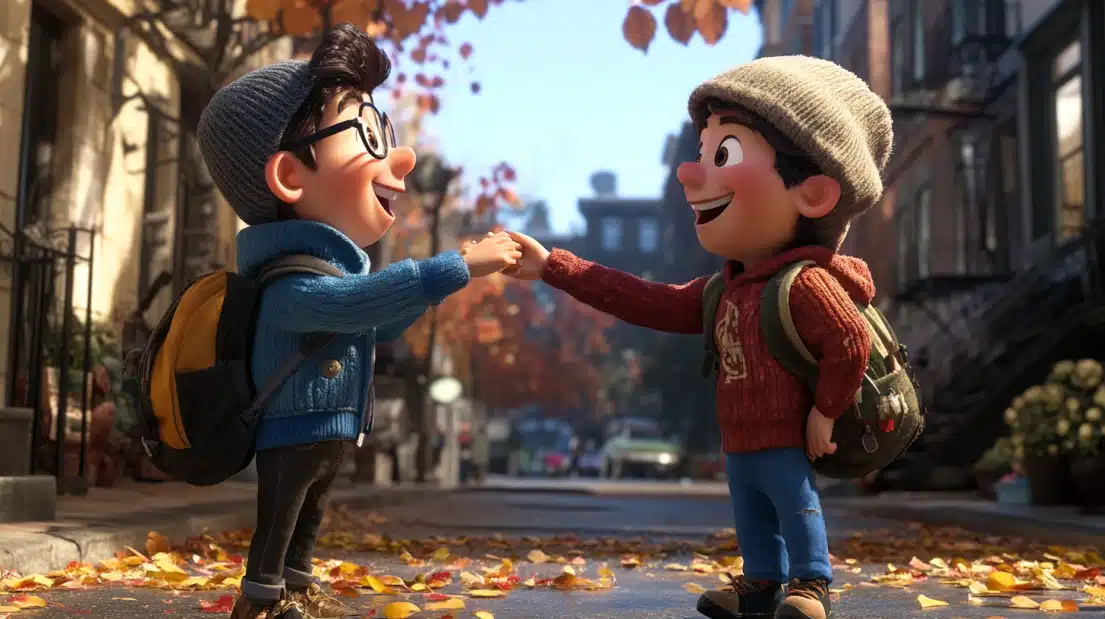We all want our kids to grow up kind and well-behaved. But teaching good manners can be tricky. Knowing where to start or how to make lessons stick is hard. We get it – raising polite children is no small task.
Don’t worry; we’ve got your back. In this article, we’ll share 33 easy-to-teach manners to help your children shine. These tips will make your job as a parent easier and set your kids up for success.
Get ready to learn practical ways to teach respect, kindness, and social skills. We’ll cover everything from basic “please” and “thank you” to more advanced etiquette.
Let’s explore and help our kids become the best versions of themselves.
33 Good Manners Every Parent Should Teach Their Kid
Table Manners

1. Using “Please” and “Thank You”
- Explanation: Using “please” and “thank you” is a simple way to show respect and appreciation.
- How to Teach: Reinforce by modeling this behavior consistently and praising your child when they remember to use these words.
2. Chewing with Mouth Closed
- Explanation: Chewing with the mouth closed is polite and helps maintain a pleasant dining experience.
- How to Teach: Gently remind your child during meals and praise them when they remember to do so.
3. Waiting Before Eating
- Explanation: Waiting for everyone to be seated and served before starting to eat is a sign of respect.
- How to Teach: Encourage your child to wait until everyone has their food and to ask permission before starting to eat.
4. Using Napkins Properly
- Explanation: Using a napkin to wipe your mouth and hands is a basic dining etiquette.
- How to Teach: Show your child how to place a napkin on their lap and use it properly during meals.
5. Asking to Be Excused
- Explanation: Asking to be excused before leaving the table shows consideration for others.
- How to Teach: Teach your child to politely ask, “May I be excused?” after finishing their meal.
Communication Manners

6. Not Interrupting When Others Are Speaking
- Explanation: Waiting for your turn to speak shows respect and helps in effective communication.
- How to Teach: Practice turn-taking during conversations and gently remind your child if they interrupt.
7. Speaking Clearly and Politely
- Explanation: Speaking in a clear and polite tone makes communication more effective and respectful.
- How to Teach: Encourage your child to speak clearly and remind them to use polite language when addressing others.
8. Saying “Excuse Me”
- Explanation: Saying “excuse me” when needing attention or when passing by someone is a polite way to avoid being rude.
- How to Teach: Reinforce the habit by modeling it yourself and reminding your child in appropriate situations.
9. Apologizing When Wrong
- Explanation: Apologizing when you’ve made a mistake is a key part of maintaining good relationships.
- How to Teach: Encourage your child to say “I’m sorry” when they have done something wrong, and explain why it’s important.
10. Complimenting Others
- Explanation: Giving compliments is a way to show appreciation and positivity towards others.
- How to Teach: Teach your child to give genuine compliments by modeling this behavior and encouraging them to notice good things about others.
Social Manners

11. Greeting Others Properly
- Explanation: Saying “hello” or “good morning” when meeting someone is a basic social courtesy.
- How to Teach: Encourage your child to greet family members at home and then extend this practice to friends and others.
12. Making Eye Contact
- Explanation: Making eye contact shows that you are paying attention and are engaged in the conversation.
- How to Teach: Practice simple conversations emphasizing eye contact, and praise your child when they maintain it.
13. Sharing with Others
- Explanation: Sharing toys, food, or other items shows kindness and consideration for others.
- How to Teach: Encourage sharing during playtime and explain the importance of thinking about others’ needs.
14. Taking Turns
- Explanation: Taking turns during activities ensures fairness and helps in developing patience.
- How to Teach: Use games that involve turn-taking and remind your child to wait for their turn during group activities.
15. Respecting Others’ Personal Space
- Explanation: Respecting personal space helps in making others feel comfortable and respected.
- How to Teach: Explain the concept of personal space and encourage your child to give others room during interactions.
Behavior in Public

16. Using Indoor Voices
- Explanation: Using a quieter voice indoors, especially in public places, is polite and considerate.
- How to Teach: Remind your child to lower their voice in public settings like libraries or stores.
17. Holding Doors for Others
- Explanation: Holding the door open for someone entering or exiting is a courteous gesture.
- How to Teach: Encourage your child to hold the door for others and explain how this small act can brighten someone’s day.
18. Covering Mouth When Coughing or Sneezing
- Explanation: Covering the mouth prevents the spread of germs and is a sign of respect for others’ health.
- How to Teach: Teach your child to use a tissue or their elbow to cover their mouth when they cough or sneeze.
19.Throwing Trash in the Bin
- Explanation: Properly disposing of trash keeps public spaces clean and shows respect for the environment.
- How to Teach: Make it a habit to find a trash bin for any litter, and encourage your child to do the same.
20. Waiting Patiently in Line
- Explanation: Waiting patiently in line without pushing or cutting is a fundamental aspect of public behavior.
- How to Teach: Practice waiting in line during everyday activities and praise your child when they wait patiently.
Respect for Others

21. Listening to Others
- Explanation: Actively listening when someone is speaking shows that you value their thoughts and opinions.
- How to Teach: Encourage your child to listen without interrupting, and ask them questions about what they heard to reinforce this habit.
22. Respecting Elders
- Explanation: Many cultures value showing respect to elders by using titles (Mr., Mrs., etc.).
- How to Teach: Teach your child to address elders respectfully and explain why it’s important to honor those older than us.
23. Helping Others in Need
- Explanation: Offering help to those in need, whether it’s holding a heavy item or assisting someone, is a kind and respectful gesture.
- How to Teach: Encourage your child to look for ways to help others and praise them when they do.
24. Being Honest
- Explanation: Honesty is a cornerstone of trust in any relationship.
- How to Teach: Teach your child the importance of telling the truth and model honesty in your own behavior.
25. Using Polite Language
- Explanation: Using polite language, such as “excuse me,” “please,” and “thank you,” in conversations shows respect and kindness.
- How to Teach: Reinforce polite language by modeling it and gently correcting your child when they forget.
Personal Responsibility

26. Taking Responsibility for Actions
- Explanation: Admitting when you’ve made a mistake and taking responsibility is a sign of maturity and integrity.
- How to Teach: Encourage your child to own up to their actions and discuss the importance of accountability.
27. Being On Time
- Explanation: Punctuality shows respect for others’ time and helps in building trust and reliability.
- How to Teach: Teach your child to prepare in advance and plan their time, explaining why being on time is important.
28. Tidying Up After Themselves
- Explanation: Cleaning up after oneself, whether it’s toys, dishes, or workspace, shows respect for shared spaces.
- How to Teach: Create a routine where your child tidies up after activities, and praise them for keeping things neat.
29. Being Organized
- Explanation: Keeping personal belongings organized helps in being responsible and prepared.
- How to Teach: Help your child set up an organization system for their toys, school supplies, etc., and regularly check in to maintain it.
30. Completing Tasks Promptly
- Explanation: Finishing tasks on time, whether it’s homework or chores, shows reliability and responsibility.
- How to Teach: Set clear expectations for task completion and help your child develop a routine to manage their responsibilities.
Digital Manners

31. Using Technology Respectfully
- Explanation: Being mindful of how technology is used, such as not texting during conversations or keeping the volume down, shows respect for others.
- How to Teach: Discuss appropriate technology use, set boundaries for screen time, and model respectful behavior yourself.
32. Asking Permission Before Taking Photos
- Explanation: Asking permission before taking someone’s photo is respectful and considerate of their privacy.
- How to Teach: Encourage your child to always ask before taking a photo and explain why it’s important to respect others’ privacy.
33. Being Kind Online
- Explanation: Using kind and respectful language in online interactions helps maintain a positive digital environment.
- How to Teach: Discuss the importance of kindness online, monitor your child’s online interactions, and praise them for positive behavior.
Conclusion
Let’s wrap up our chat about teaching good manners to kids. We’ve gone through many helpful tips, from saying “please” and “thank you” to showing respect for others. These small acts can make a big difference in how our children grow up and interact with the world.
Remember, teaching manners isn’t a one-time thing. It’s an ongoing process that needs patience and practice. As parents, we set the example. Our kids are more likely to follow suit when we show good manners.
Every child learns at their own pace, so don’t worry if it takes time. The goal is to help our kids become thoughtful, kind people who others enjoy being around.
With these manners in their toolkit, our children are well on their way to becoming caring and respectful adults.




